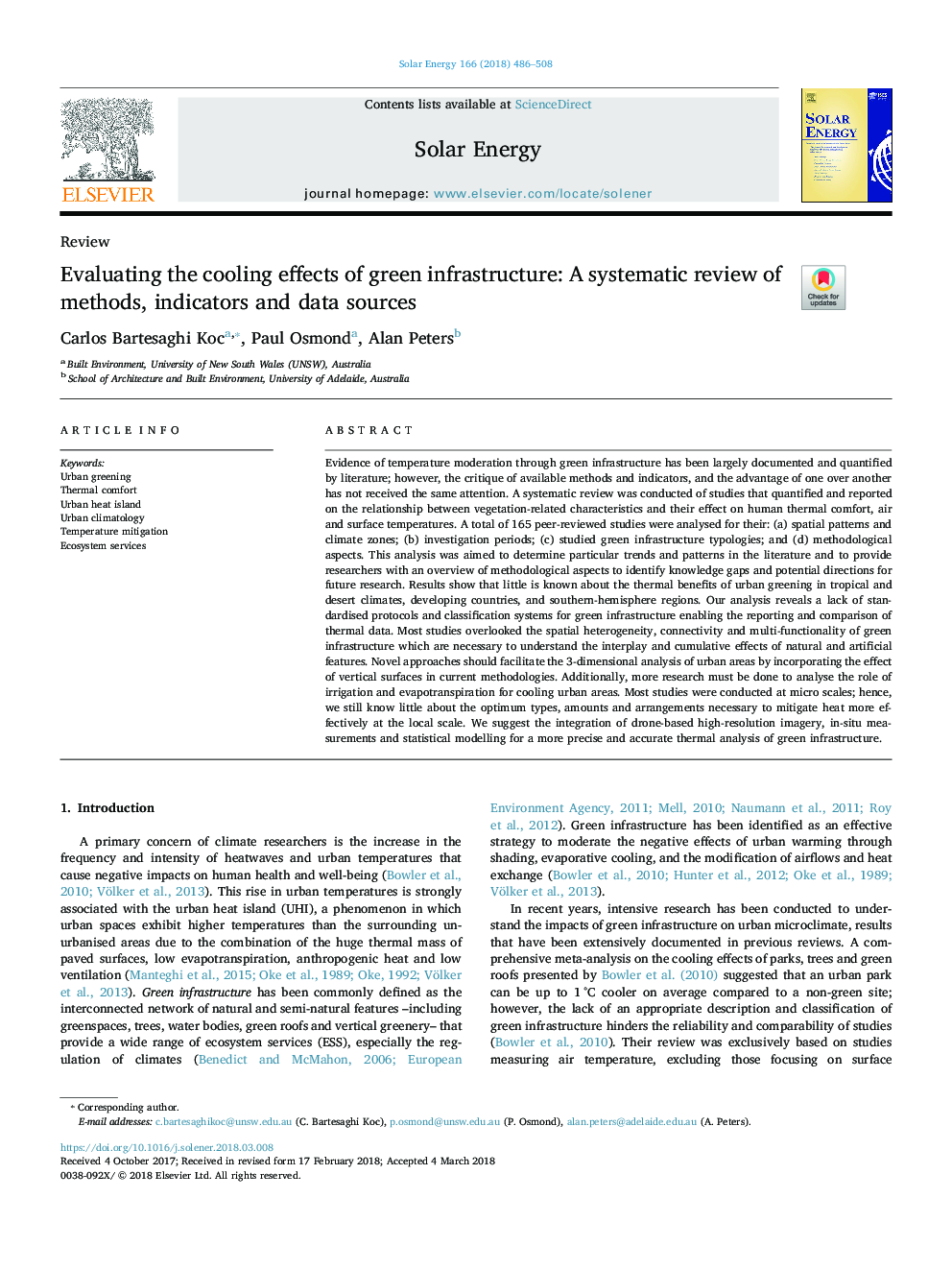| کد مقاله | کد نشریه | سال انتشار | مقاله انگلیسی | نسخه تمام متن |
|---|---|---|---|---|
| 7935349 | 1513052 | 2018 | 23 صفحه PDF | دانلود رایگان |
عنوان انگلیسی مقاله ISI
Evaluating the cooling effects of green infrastructure: A systematic review of methods, indicators and data sources
ترجمه فارسی عنوان
ارزیابی اثرات خنک سازی زیرساخت های سبز: بررسی سیستماتیک روش ها، شاخص ها و منابع داده
دانلود مقاله + سفارش ترجمه
دانلود مقاله ISI انگلیسی
رایگان برای ایرانیان
کلمات کلیدی
سبز سازی شهری، راحتی حرارتی، جزیره گرمایی شهری، هواشناسی شهری، کاهش دما خدمات محیط زیستی،
موضوعات مرتبط
مهندسی و علوم پایه
مهندسی انرژی
انرژی های تجدید پذیر، توسعه پایدار و محیط زیست
چکیده انگلیسی
Evidence of temperature moderation through green infrastructure has been largely documented and quantified by literature; however, the critique of available methods and indicators, and the advantage of one over another has not received the same attention. A systematic review was conducted of studies that quantified and reported on the relationship between vegetation-related characteristics and their effect on human thermal comfort, air and surface temperatures. A total of 165 peer-reviewed studies were analysed for their: (a) spatial patterns and climate zones; (b) investigation periods; (c) studied green infrastructure typologies; and (d) methodological aspects. This analysis was aimed to determine particular trends and patterns in the literature and to provide researchers with an overview of methodological aspects to identify knowledge gaps and potential directions for future research. Results show that little is known about the thermal benefits of urban greening in tropical and desert climates, developing countries, and southern-hemisphere regions. Our analysis reveals a lack of standardised protocols and classification systems for green infrastructure enabling the reporting and comparison of thermal data. Most studies overlooked the spatial heterogeneity, connectivity and multi-functionality of green infrastructure which are necessary to understand the interplay and cumulative effects of natural and artificial features. Novel approaches should facilitate the 3-dimensional analysis of urban areas by incorporating the effect of vertical surfaces in current methodologies. Additionally, more research must be done to analyse the role of irrigation and evapotranspiration for cooling urban areas. Most studies were conducted at micro scales; hence, we still know little about the optimum types, amounts and arrangements necessary to mitigate heat more effectively at the local scale. We suggest the integration of drone-based high-resolution imagery, in-situ measurements and statistical modelling for a more precise and accurate thermal analysis of green infrastructure.
ناشر
Database: Elsevier - ScienceDirect (ساینس دایرکت)
Journal: Solar Energy - Volume 166, 15 May 2018, Pages 486-508
Journal: Solar Energy - Volume 166, 15 May 2018, Pages 486-508
نویسندگان
Carlos Bartesaghi Koc, Paul Osmond, Alan Peters,
